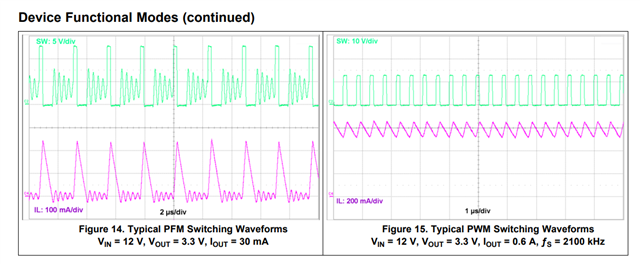Hi team, I have some questions regarding the operation of the LMR34206:
- EMC Performance. There are 2 versions of LMR34206, one with FPWM and the other one has an auto mode for light loads. In general, which one of these 2 modes create less EMC emissions? Do you have a report with such comparison? I would like to understand if a fixed PWM signal generates more emissions or less emissions than PFM.
- Do you have a detailed graph/table where I can see when this buck converter switches between FPWM and normal PWM and also for the auto mode version between PFM and PWM?
Thanks.




